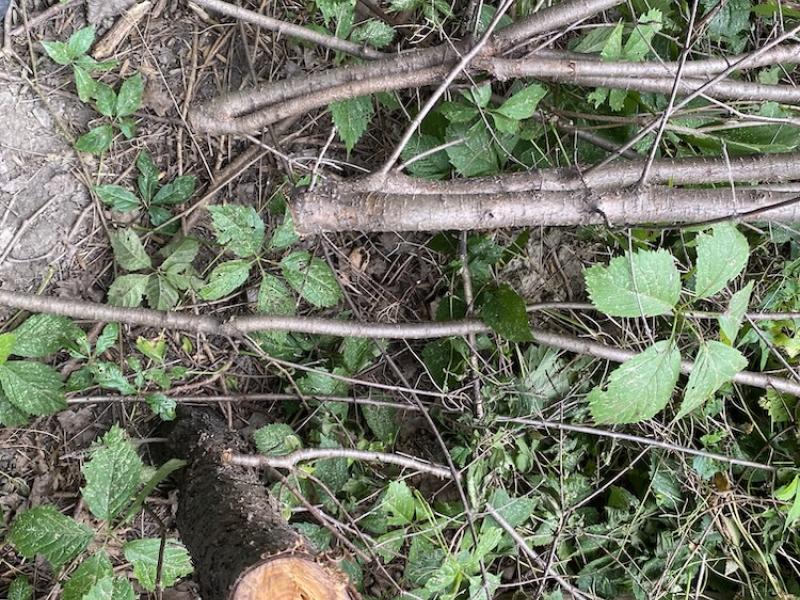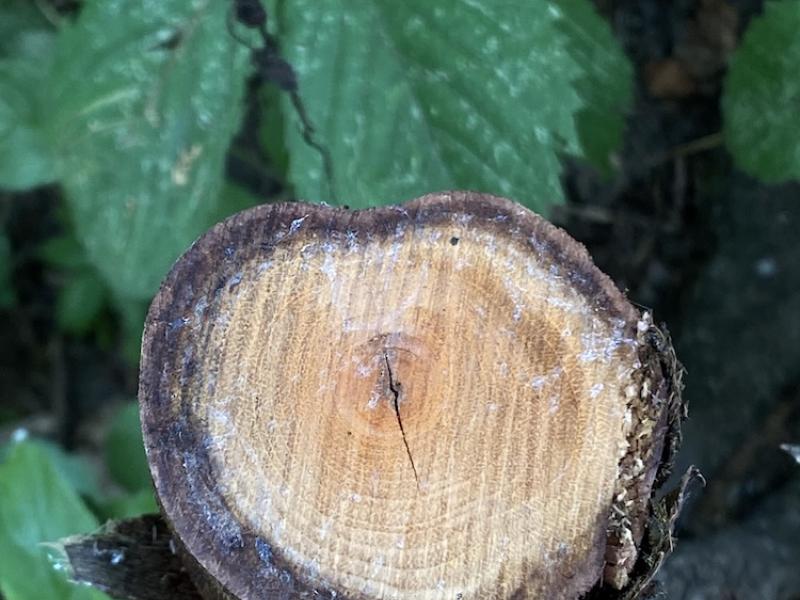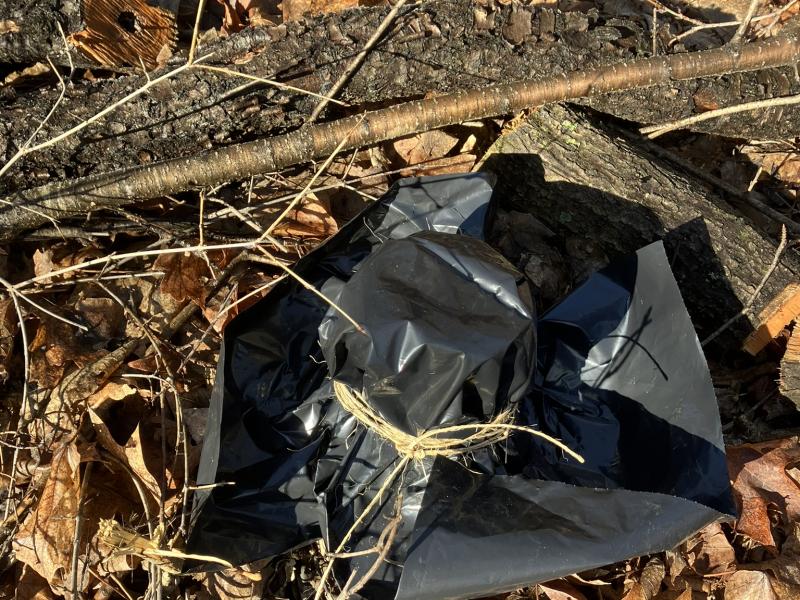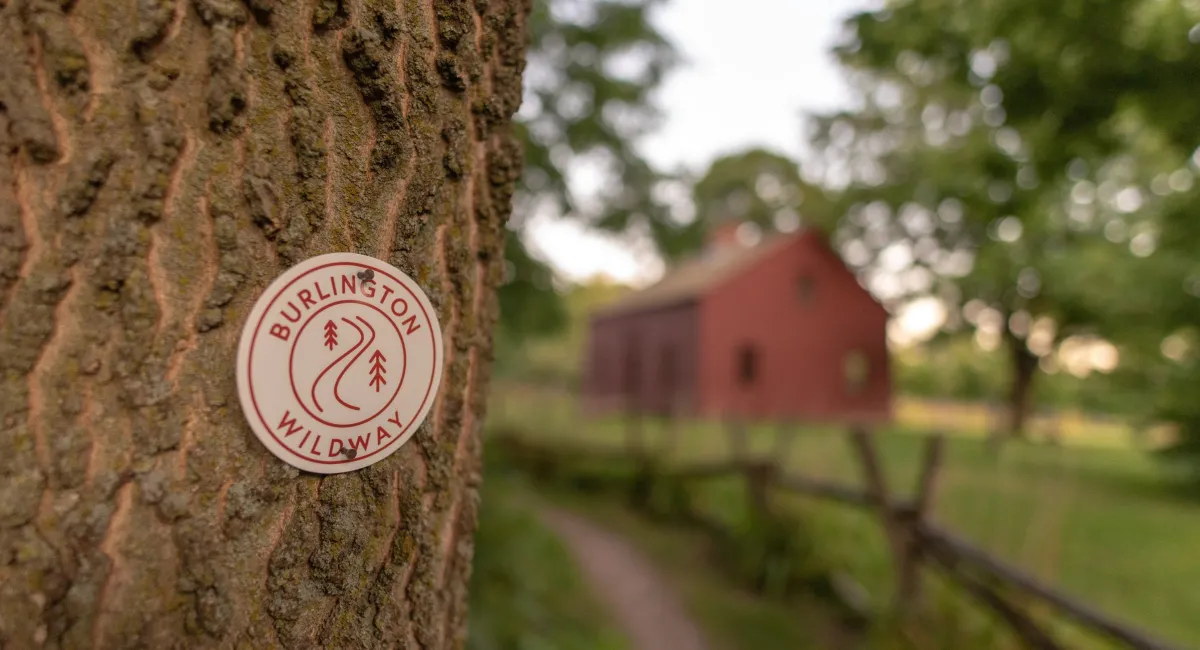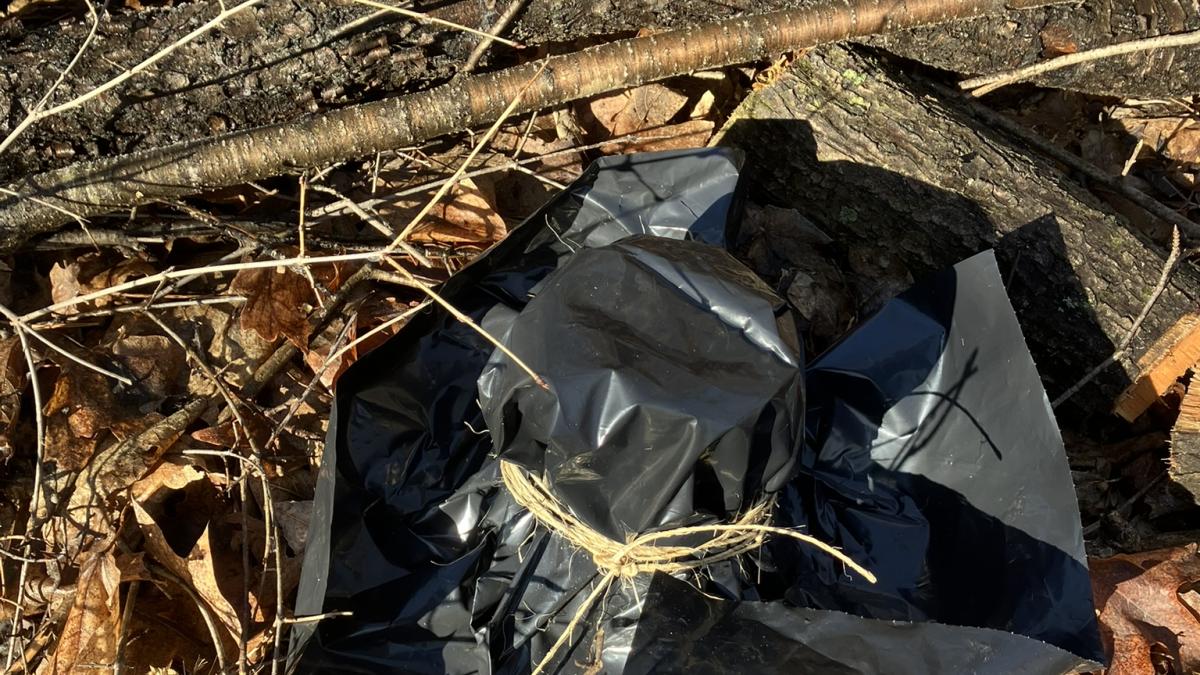
By Daniel Schmidt, Conservation Field Coordinator, Burlington Parks Recreation & Waterfront
Managing invasive buckthorn for a healthy future forest
My chainsaw bites into the tree bark, exposing a bright orange cambium layer. I cut through the trunk until the tree teeters for a second, enough time for me to back away, and hits the ground in a tangle of snapped and splintered branches. My colleague, and fellow sawyer, looks up from his own stump at the mess of an understory we're leaving in our wake and calls out, “Looking gooooood!”
It’s mid-April, before leaf-out, and we’ve been cutting buckthorn, both glossy and common, both invasive. Instead of removing the cut trees from the forest, we’re creating a dense thicket of broken branches and trunks. The only thing left standing are a few hackberry, white oak, and cherry that we’ve been carefully avoiding. Also dotting the understory are squares of contractor bags, wrapped around and tied onto the stumps. Some 50 downed trees later, the forest is beginning to look structurally diverse, habitat rich, and supportive of native trees; in other words, it’s beginning to look messy again.
While invasive plant species are part of every natural area in Burlington, there are about 12 or so acres completely dominated by buckthorn. Pockets of Arms Forest, Ethan Allen Park and Oakledge Park have become buckthorn monocultures. From the mid-canopy down, there are effectively no native trees. Forest regeneration relies on a healthy population of native seedlings and saplings that will eventually fill the forest canopy. If the seedlings are all buckthorn, the saplings are all buckthorn, then the canopy is going to eventually be, you guessed it, all buckthorn.
But the tangled mess we created back in April gives us some hope for the future of forest regeneration in Burlington. Without too much expense or complication (but with some very tired arms) we can create conditions that allow native forests to thrive. In fact, we’ve already done much of the work.
Step 1:
Cut the largest and most prolific seed-producing buckthorn trees. Seeds are the primary dispersal mechanism and reducing the number of available seeds helps reduce the number of seedlings. The large trees also provide the best mess, a critical part of step two. Many thanks to VYCC who, in 2024, spent two weeks cutting buckthorn in Oakledge Park.
Step 2:
Directional felling of buckthorn to create brush piles in the forest. When I took my first USFS sawyer course, it was common practice to limb and buck a tree so that is “lays down.” Not anymore! By leaving the branching intact, we are both providing habitat for birds and mammals AND reducing deer browse. Deer avoid brushy areas, which means that native seedlings can grow undisturbed through the dead buckthorn branches (oh, hello metaphor).
Step 3:
Bag all cut stumps. We use 3mm contractor bags, cut into squares, and wrapped around the entire trunk. We make sure that the bag covers the entire stump to ground level. Then we wrap the whole thing in twine. In Burlington, we’re limited in our use of herbicide, so stump bagging is a good alternative. Not only will it prevent the stump from putting out new shoots, but the hot, moist microclimate created in the bag will help rot out the stump and help kill the roots.
Step 4:
Plant native saplings to help start the forest regeneration process. While cutting we’re careful to avoid disturbing any native seedlings or saplings. We’ll often hand-pull all the buckthorn seedlings from around a healthy native tree seedling (mini-crop tree release?). But there are places where there are so few native understory trees that it is beneficial to plant small native trees to help create the robust native understory. Check out Kieslich Park if you want to see what this looks like in action.
As you walk the Wildways Trail this year, keep your eyes open for bagged stumps, downed trees, and newly planted saplings. Look up and you may see gaps in the canopy. Look down and hopefully you will see a few native saplings poking through.
